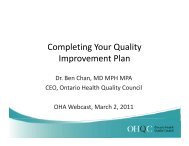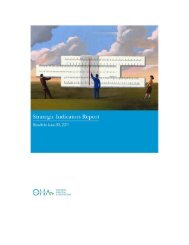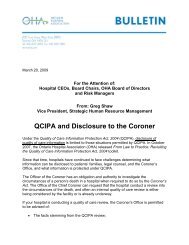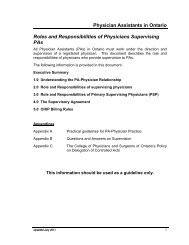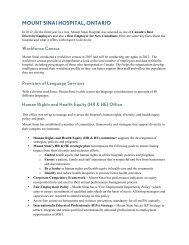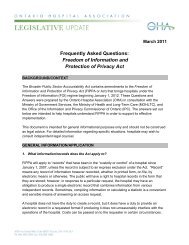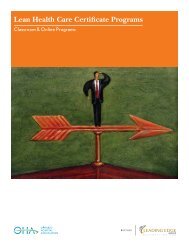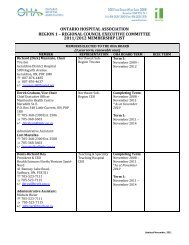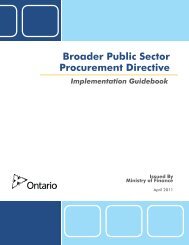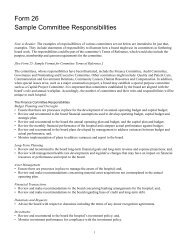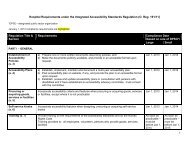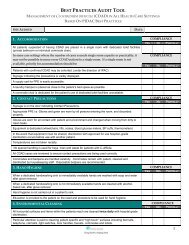The Relationship Between Employee Engagement and Human ...
The Relationship Between Employee Engagement and Human ...
The Relationship Between Employee Engagement and Human ...
- No tags were found...
Create successful ePaper yourself
Turn your PDF publications into a flip-book with our unique Google optimized e-Paper software.
Appendix 3: Tips to Making Linkages <strong>Between</strong> <strong>Employee</strong> <strong>Engagement</strong> <strong>and</strong> KeyOrganization Metrics1. Before beginning analysis, consider the following:a. An organization-wide response rate of at least 50% is recommended for the employeeexperience/ engagement survey. <strong>The</strong> survey should be a ‘census’ of all employees, not asample.b. Submit appropriate department identification for your employee population to your surveyprovider. Departments should be no smaller than 25 continuing employees (i.e., employeeswho would be included in your HR metrics) <strong>and</strong> should have a response rate of at least 40%(i.e., 10 completed surveys). Survey results <strong>and</strong> HR metrics for fewer than 10 employeesshould not be reported to protect confidentiality.c. Accurate HR metrics available over the same time period that your employee experience/engagement survey was conducted.2. Determine with your survey vendor the employee engagement measure that you will use in youranalysis (e.g. % high engagement per department or average departmental engagement score).Average scores on multi-item engagement scales is the recommended measure.3. For departments with employee experience/ engagement survey responses less than 10 people,consolidate like departments.4. Obtain employee experience/ engagement survey levels/ scores by department from your surveyvendor.5. Identify the key HR metrics that your organization will use. If the HR metrics are for full-timeemployees (e.g. full-time resignation rate, full-time sick days, etc.), you will need to use engagementscores for full-time survey respondents only.6. Collect data for the key HR metrics identified by department over the same time period that youremployee experience/ engagement survey was conducted. If your survey was conducted in Q1 of acalendar year, use the pervious calendar year’s HR metrics. Otherwise, use HR metrics from the yearin which the survey was conducted.7. Identify three or four departments with the highest engagement levels/ -scores <strong>and</strong> three or fourdepartments with the lowest engagement levels/ scores. Compare survey response rates,engagement scores <strong>and</strong> key HR metrics in each of the two groups. Try to identify lessons to shareacross the organization from the high-engagement departments (how do they achieve this?), <strong>and</strong>work with managers in low-engagement departments to design appropriate interventions toimprove engagement.8. Using all departments which meet above data reporting criteria, calculate correlations betweendepartment-level engagement scores <strong>and</strong> each of the key HR metrics. Combine data in Excelworksheets <strong>and</strong> calculate correlation coefficients for the relevant indicators (In Excel, under theFormulas tab, using the AutoSum menu, there is a list of different mathematical functions available.Select CORREL which returns the correlation coefficient between two data sets.)



